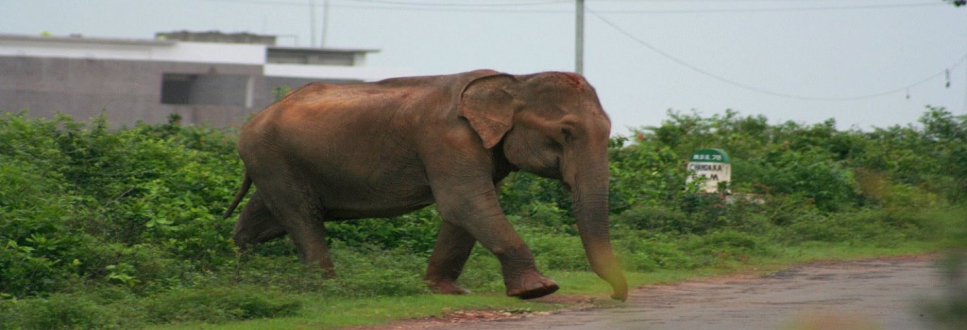Wildlife Corner
SYMPOSIUM ON (CONSERVATION OF WILD TIGERS IN ORISSA) |
Wildlife includes all life forms on earth in their natural state. The welfare of human race is inextricably linked to the maintenance of a balanced eco-system acknowledging the presence of the myriad life forms. Development activities in consonance with a balanced eco-system is the only means to ensure a healthy world for the homo sapiens. Environmentalists like us have been working for the right to existence of all life forms with the ultimate objective of creating a healthy world for ourselves. It is here that preservation and conservation of nature and wildlife assume importance in the modern day context of development and welfare initiative. We are now faced with the double challenges of restoring the lost balance and setting up carefully researched models of development for the future. In the Indian context, the lives of a large percentage of the population are inextricably linked with the forests. The forest cover in India faces a major crisis and is under tremendous pressure on account of ever increasing demand for fuel, fodder and timber, and the consequent over exploitation. Environmentalists have targeted the tiger as the object of their conservation activities as it occupies the apex position in the biological pyramid. The presence of a tiger in a given habitat explains scientifically the existence of a healthy eco-system as this is a species which is sensitive to disturbances and imbalances in the eco-system. In trying to preserve this habitat of the tiger we will be conserving our major sources of water, soil, water table, oxygen, food and medicinal plants, in short our food and water security for the future. Besides, aesthetically speaking can we think of a world bereft of the cascading waterfalls, the silent brooks and groves, the tranquil and serene jungles, the call of the wilds, the resting places of our deities, etc.? The tiger and it’s habitat have been under tremendous pressure worldwide and 3 of the 8 sub-species have already become extinct bringing in their wake ecological disasters in their host countries. The Royal Bengal Tiger found in the Indian sub-continent holds promise for the future of the species. The state of Orissa still holds a fairly good number of tigers, 173, and the state holds a large number of habitats which promises that Orissa can sustain a figure in excess of 400. However in the last 2 decades the forest cover in Orissa has come under a lot of stress. The sad aspect of this decline is that while other states have suffered this decline on achieving large scale development (though unplanned as far as ecology is concerned), in Orissa this decline has been brought about through sheer neglect of the habitat and rampant poaching. It is not too late to come up with a land-use policy for the future and conservation strategies to retain what ever is left. Wild Orissa organised a symposium on 16th and 17th February 2003 at Bhubaneswar to highlight critical issues relating to the conservation of tiger habitats, wildlife corridors, people’s participation in conservation. This event was sponsored by the Ministry of Environment and Forests Government of India and was organised in association with the state Forest Department Government of Orissa. During the event, leading tiger experts in the country presented papers and interacted with officials of state as well as central government, non governmental organisations, press, and youth. Orissa is well endowed with wide diversity of flora and fauna, and a good population of the flagship species, i.e., the Royal Bengal Tiger, Panthera tigris. The forest cover in the state is under tremendous pressure with several species on the brink of extinction and the tiger along with the other major species like the leopard, elephant, gaur, etc., doomed to fragmented and isolated population. Orissa has not been able to attract the attention of the planners and the major conservation authorities/groups unlike the other states. Wild Orissa had organised this event, with financial support from the Ministry of Environment and Forests Government of India, to highlight the situation on the ground and the foregoing situations so as to attract the required attention and interventions for the state of Orissa. Wild Orissa is an organisation registered under the Societies Registration Act 1860 and the Income Tax Act & with it’s incomes and donations exempted under the Income Tax Act, working in the field of nature and wildlife conservation for more than 5 years now and have contributed significantly towards tiger conservation, preservation of the rich bio-diversity of Chilika, combating timber and wildlife poaching through people’s participation, assisting people living inside the forest areas below the poverty line, plantations, etc. Members are professionals from various walks of life and work for conservation out of their concern and affection for the subject, voluntarily. We have been assisting the government authorities in research and conservation matters relating to wildlife and wild habitats. Our working methodologies include direct intervention among affected people, persuasion of government officials, media coverage, sensitization of elected representatives, providing a forum for interface between the government and affected people, publications and research. |








